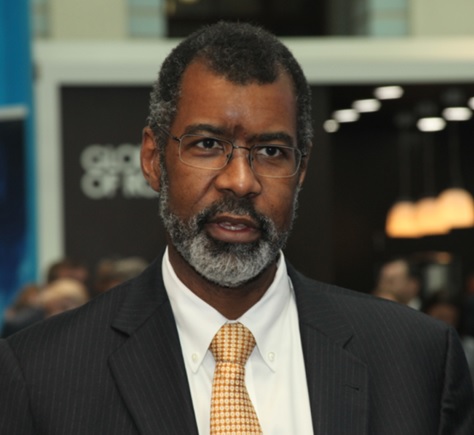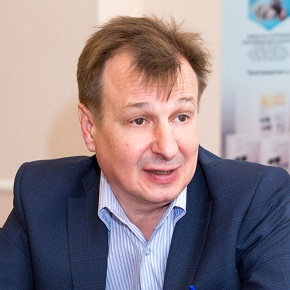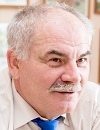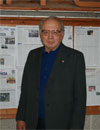 |
||
|
William D. Magwood IV: Make innovations available as soon as possible AtomInfo.Ru, PUBLISHED 21.07.2017 IX International Forum ATOMEXPO 2017 was held on June 19th - 21st, 2017. Director General of Nuclear Energy Agency (NEA) of the Organization for Economic Co-operation and Development (OECD) Mr William D. Magwood participated in the session. The NEA and Russian State Corporation ROSATOM signed an agreement to facilitate the translation of key NEA reports into Russian. After this Mr William D. Magwood answered the questions of Russian independent nuclear online newspaper AtomInfo.Ru. CONTINUED BELOW William D. Magwood IV, (c) AtomInfo.Ru  Interviewer: We'd like to ask several questions on the NEA's activities. What work does the Agency fulfil from the viewpoint of experimental support for innovations in the nuclear field? DG Magwood: Well, innovation is going to be one of the most important issues facing the nuclear field over the next several years. We are working on several important initiatives in this area, including an activity called Nuclear Innovation 2050. NI2050 is designed to identify the most important areas of technologies necessary to enable us to reach our goals in 2050 in terms of reducing carbon emissions. We are hoping to gain global agreement on what those priorities are and what barriers keep us from bringing those technologies come to the market. We will then work with all our member countries to find ways to break through those barriers and make those technologies available as soon as possible. Interviewer: And what about relations with Generation IV International Forum? DG Magwood: The Generation IV International Forum is operated as a separate activity under the NEA. Our role has been to facilitate the discussion between the countries in Generation IV and look for opportunities to leverage their activities with those of the broader NEA. For example, we brought together the researchers working on Generation IV technologies with the leading regulators from around the world to discuss the regulatory issues associated with deploying Generation IV technologies. And in addition, through many of our other activities, we look at issues such as the economics of advanced systems and the most effective ways to deploynew, advanced technologies. Interviewer: What about Generation V? Maybe it's time to start to work on Gen V now? DG Magwood: Generation IV is still a long way away. And the Generation IV technologies were selected to be a range of technologies that we will need to develop over the next 50 years. Interviewer: A very important question for nuclear industry everywhere in the world is nuclear waste. What is the Agency thinking about this subject? DG Magwood: Nuclear waste is a very important aspect of the work at the NEA. We have a Committee of leading nuclear waste officials across our governments who work together to discuss the issues associated with disposing of nuclear waste. One of the most important conclusions they've reached is that disposing of nuclear waste in deep geological repositories will work. From a technical standpoint, we believe these challenges associated with deep geological repositories are very manageable. But the big challenge that we face is the sociological challenge of siting such a facility. Our member countries are working together to find better ways to work with stakeholders to make decisions on siting. Actually, in many areas of nuclear waste we find that the sociological issues are just as important as the technical issues, so we work with our members to identify ways to improve communications with stakeholders and improve the ability of governments to provide confidence in the final decisions. Interviewer: Here in Russia, we separate radioactive waste and spent fuel. When you're talking about nuclear waste, what do you mean? DG Magwood: Well right now I'm talking about spent fuel. But the issues are very similar, whether you talk about low-level waste, medium-level waste or high-level waste. Siting facilities is one of the big challenges. Interviewer: What about support of existing nuclear power plants? Do you participate in this technical support? DG Magwood: Absolutely. Much of the work of the agency is focused on ensuring the safety of existing nuclear power plants. For example, after the Fukushima-Daiichi accident we spent a great deal of effort looking at the accident and working with our member countries to identify the best courses of action. Our members look at operating experience from events that they've learned around the world and determine the regulatory actions that should be taken to ensure the safety of existing plants. And we also work very hard to analyse the economics of nuclear power. We also identify the methods and technologies that will make the plants more efficient to operate and more cost-effective to build. Interviewer: What about people - human resources? Young people - the important resource in nuclear field. What does the Agency do for attracting the young generation to a career in the nuclear field? DG Magwood: We support our members to deal with the issues that concern them most. The issue of the education and promotion of nuclear technology among young people is certain one such issue. One initiative that we've recently begun is called NEST, NEA Nuclear Education Skills and Technology Framework. The idea behind NEST is to promote the development of advanced research projects that will be implemented by university students across the world. Through NEST, students in Russia can work directly with students in Korea and France and the United States to work on practical research projects that will help them build critical skills. Interviewer: Is it your idea or this joint work has already been started? DG Magwood: We have begun to work to put the activity together and we expect to be able to start it very soon. Interviewer: What would be the subject of the project? DG Magwood: The choice of the projects depends on the participating countries. We expect to have several research projects to begin with, some of which will relate to advanced nuclear technology, but others might be more focused on things like nuclear waste and decommissioning. Our hope is that this multi-national approach will excite young people and bring more of them into nuclear technology research. Interviewer: Thank you very much for your interview for AtomInfo.Ru. Topics: Interview Other news: 443 nuclear units are operating in the world Another 65 units have the status of the being built one. New American submarine will be named after admiral Rickover 60th anniversary of the first trip of the nuclear submarine Nautilus. Westinghouse will deliver CE16NGF fuel on Palo Verde This is a new generation fuel for 16×16 grid. |
Hero of the day 
Dmitry Klinov: BFS is being renewed The task of the BFS retrofitting and upgrading arose in late 2010 as a consequence of the enormous difficulties that we had encountered in renewing the licence to operate our fast critical facilities. INTERVIEW
Oleg Grudzevich OPINION
Rudolf Baklushin |

